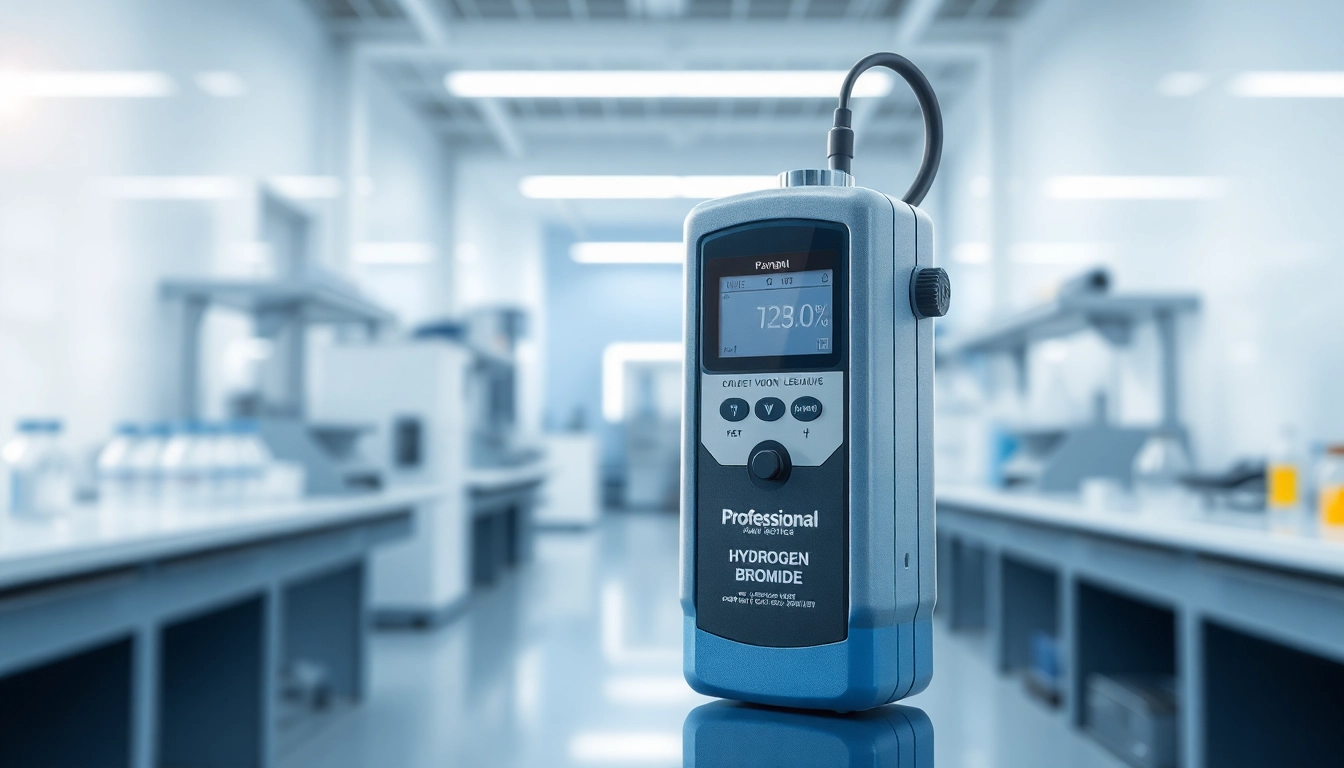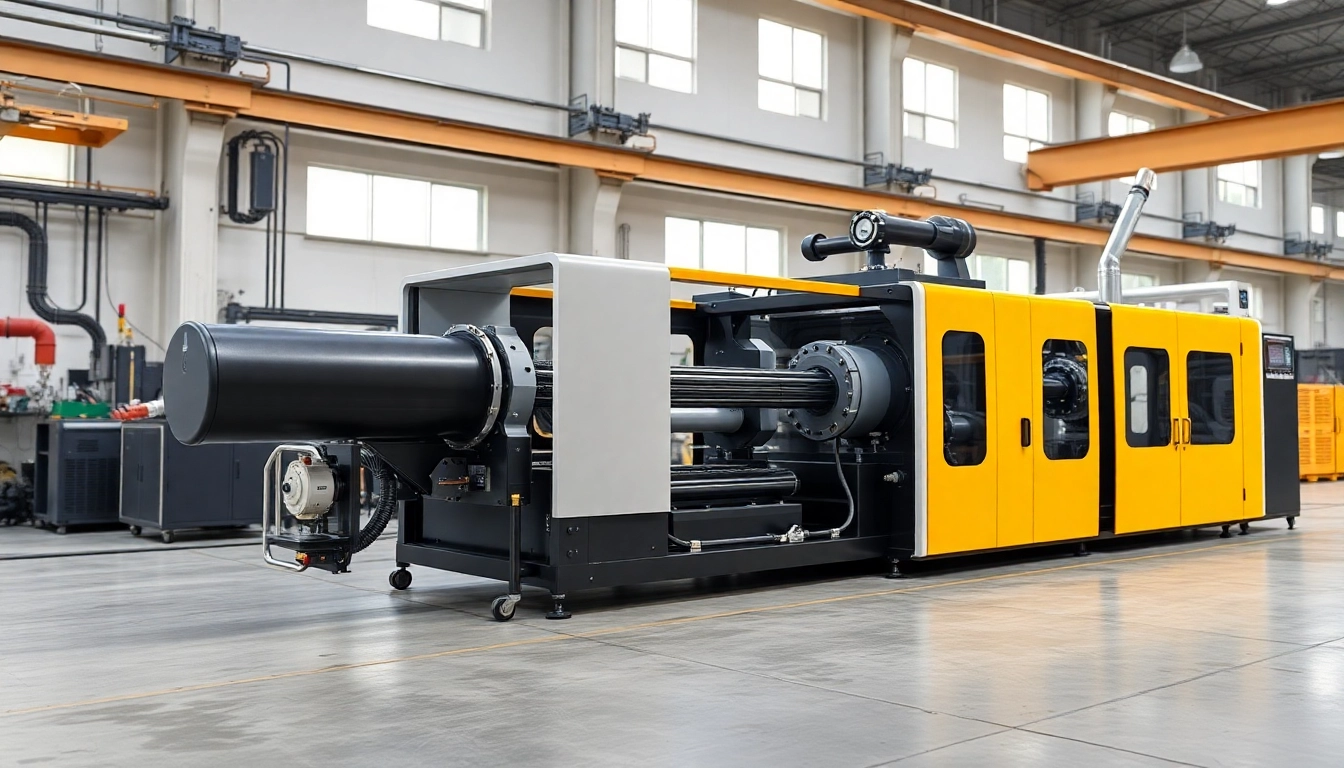Understanding Hydrogen Bromide and Its Risks
What is Hydrogen Bromide?
Hydrogen bromide (HBr) is a colorless gas at room temperature that has a sharp, irritating odor. It is highly soluble in water, resulting in hydrobromic acid, a strong acid that is utilized in various industrial processes. Composed of one hydrogen atom and one bromine atom, HBr is a member of the hydrogen halides, a group of potent acidic gases. Its occurrence naturally in volcanic gases and as a byproduct in the production of bromine compounds makes it essential to monitor in environments where it may accumulate.
Health and Safety Implications
Hydrogen bromide poses significant health risks if inhaled or absorbed through the skin. This gas can cause severe respiratory irritation, resulting in coughing, choking, and inflammation of the respiratory tract. Short-term exposure may lead to discomfort, while prolonged exposure may result in more severe health issues such as bronchitis or pulmonary edema. Thus, the protection against HBr exposure is critical in workplaces such as chemical processing plants, laboratories, and manufacturing units that handle bromine or its derivatives.
Common Applications and Industries
Hydrogen bromide is primarily utilized in the production of flame retardants, pharmaceuticals, and agricultural chemicals. Its applications extend to:
- Chemical Manufacturing: Employed in synthesizing various brominated compounds.
- Pharmaceuticals: Used in making specific drugs that require bromine as a component.
- Flame Retardants: Added to materials to reduce flammability.
- Agriculture: Incorporated into pesticides and herbicides to enhance efficacy.
The Importance of Hydrogen Bromide Gas Detectors
Why You Need a Reliable Detector
Given the hazardous nature of hydrogen bromide, possessing a reliable Hydrogen Bromide gas detector is essential for maintaining safe working environments. Early detection enables swift action, preventing potential health issues or accidents. It also underscores compliance with occupational safety regulations, safeguarding workers and minimizing liability.
Key Features to Consider
- Sensitivity: The detector’s ability to sense low levels of HBr is crucial for early warning.
- Response Time: A quick response time can mean the difference between a safe environment and a hazardous situation.
- Calibration: Regular calibration is vital for accurate readings, thus detectors should be easy to calibrate.
- Durability: Given the corrosive nature of HBr, detectors must be constructed from materials that can withstand such conditions.
- Data Logging: Advanced detectors often feature data logging capabilities, allowing for performance tracking over time.
Compliance and Standards Overview
Employers must adhere to strict guidelines regarding gas detection systems, especially those involving toxic substances like hydrogen bromide. Compliance with regulations set forth by organizations such as the Occupational Safety and Health Administration (OSHA) and the National Institute for Occupational Safety and Health (NIOSH) is essential. These bodies offer specific permissible exposure limits (PEL) for HBr, making it necessary for workplaces to implement effective gas monitoring systems.
How to Choose the Right Hydrogen Bromide Gas Detector
Evaluating Performance Metrics
Choosing the right detector involves an evaluation of various performance metrics. Key factors to consider include sensitivity thresholds, calibration intervals, and maintenance requirements. It’s essential to assess the detector’s ability to function effectively within the expected range of HBr concentrations. Consideration of real-world case studies and performance testing data can aid in making an informed decision.
Top Brands and Models Comparison
Several brands dominate the hydrogen bromide gas detector market, each offering unique benefits. Top models differ in aspects such as portability, detection range, and advanced features. A few notable brands include:
- RAE Systems: Known for robust models featuring wireless capabilities.
- Dräger: Offers highly sensitive detectors with easy-to-use interfaces.
- Honeywell: Renowned for multifunctional gas detectors that ensure worker safety.
Comparing these models based on performance, user reviews, and warranty offerings can aid in determining the most suitable option for specific applications.
Cost vs. Quality Analysis
When selecting a hydrogen bromide gas detector, it is essential to analyze the cost versus quality. Lower-priced detectors may be appealing, but they might not provide dependable performance or longevity. Investing in high-quality systems often results in better accuracy, lower maintenance costs, and enhanced safety features. Thus, conducting a thorough cost-benefit analysis can justify the initial investment while ensuring long-term safety and compliance.
Installation and Maintenance Best Practices
Step-by-Step Installation Guide
Proper installation of hydrogen bromide gas detectors is crucial to their effectiveness. Here’s a step-by-step guide:
- Select Location: Choose a location with the potential for hydrogen bromide accumulation, such as near vents or storage areas.
- Mount the Detector: Follow the manufacturer’s guidelines to securely mount the detector at recommended heights.
- Connect the Power Source: Ensure the device is connected to a reliable power source, and backup systems are in place for continuous operation.
- Calibration: Calibrate the detector as per the manufacturer’s instructions, ensuring sensitivity levels are set accurately.
- Testing: Conduct an initial test using a controlled release of hydrogen bromide to verify functionality.
Regular Maintenance Tips
Regular maintenance is critical to ensure hydrogen bromide gas detectors operate optimally. Suggested maintenance practices include:
- Monthly Calibration: Regular recalibration is essential to maintain accuracy.
- Check Power Sources: Ensure that power supplies and batteries are functioning correctly.
- Inspect Sensors: Visually inspect sensor areas for any signs of corrosion or damage.
- Use Trade-in Programs: Consider trade-in options for older models to keep up with technological advancements.
Troubleshooting Common Issues
While hydrogen bromide gas detectors are designed to operate reliably, they may encounter issues such as false alarms or failure to detect gas. Common troubleshooting tips include:
- Check for Calibration Errors: Erroneous readings can result from improper calibration.
- Inspect Sensors and Wiring: Physical damage to sensors or wiring can affect performance.
- Examine Environmental Factors: Extreme temperatures or humidity can impact detector functionality.
Future Developments in Gas Detection Technology
Trends in Hydrogen Bromide Detection
The gas detection industry is evolving rapidly, focusing on innovations aimed at improving safety in various sectors that use hydrogen bromide. Integrating Artificial Intelligence (AI) and machine learning algorithms into detection systems is a growing trend. These technologies offer predictive analytics, providing users with valuable insights and proactive measures to avoid gas leaks.
Innovations in Sensor Technology
Emerging sensor technologies are leading to improved sensitivity and specificity in detecting gases like hydrogen bromide. Advances in nanotechnology have paved the way for gas sensors with enhanced capabilities, offering faster detection with lower power consumption. Furthermore, these sensors are becoming increasingly miniaturized, allowing for more flexible and portable applications.
The Role of Digital Solutions in Gas Safety
Digital solutions, such as cloud storage for data management and mobile applications for alert notifications, are changing how organizations manage gas detection. By utilizing data analytics, organizations can track exposure levels over time, forecast maintenance needs, and ensure compliance with safety regulations efficiently. These digital advancements not only enhance safety but also streamline workflows for those managing hazardous materials.



